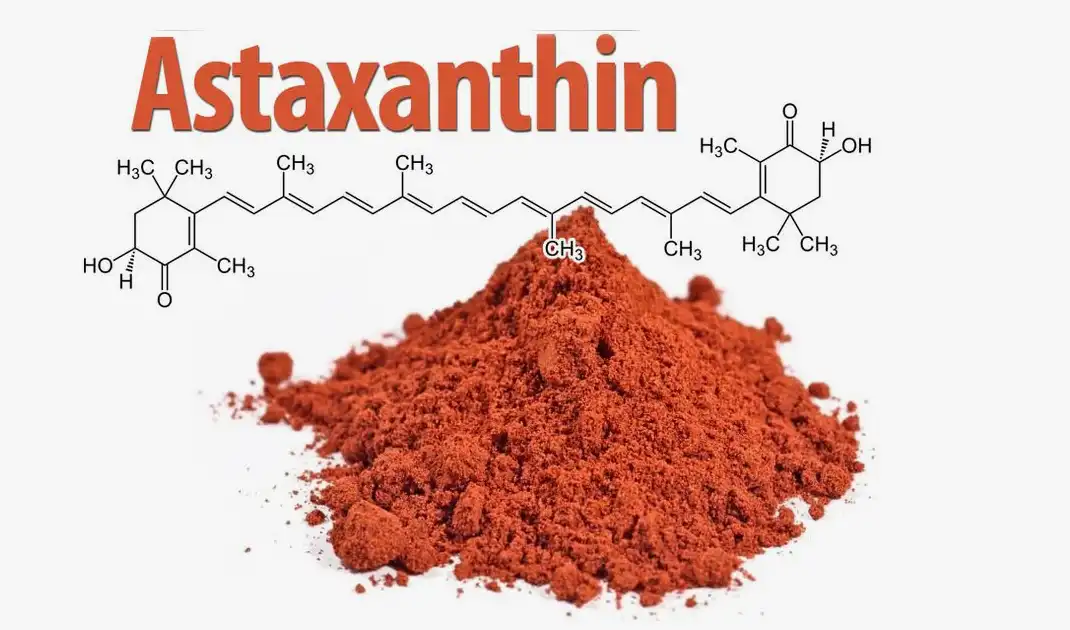What are the safe dosage levels of Astaxanthin Powder?
Astaxanthin powder, derived from the microalgae Haematococcus pluvialis, has gained significant attention in the health and wellness industry due to its potent antioxidant properties. As more people turn to natural supplements to support their overall health, understanding the safe dosage levels of astaxanthin powder is crucial. This powerful carotenoid offers a wide range of potential benefits, from supporting cardiovascular health to enhancing skin vitality and eye function. However, like any supplement, it's essential to consume astaxanthin powder in appropriate amounts to maximize its benefits while minimizing any potential risks. In this comprehensive guide, we'll explore the recommended dosage levels, safety profile, and usage guidelines for astaxanthin powder, helping you make informed decisions about incorporating this remarkable supplement into your daily routine.

Recommended Daily Intake: 4–12 mg for General Health Benefits
Low-End Dosage: 4 mg Daily
For those new to astaxanthin powder supplementation or seeking general health maintenance, a daily intake of 4 mg is often recommended as a starting point. This low-end dosage can provide noticeable benefits, particularly in terms of antioxidant support and skin health. Astaxanthin powder at this level has been shown to offer protection against oxidative stress, which is crucial for overall cellular health. Moreover, this dosage may help improve skin elasticity and hydration, contributing to a more youthful appearance. It's important to note that even at this lower dose, the potent antioxidant properties of astaxanthin powder can still have a significant impact on your body's defense against free radicals.
Mid-Range Dosage: 8 mg Daily
As individuals become more accustomed to astaxanthin powder or seek to address specific health concerns, a mid-range dosage of 8 mg daily is often recommended. This increased intake can provide enhanced benefits, particularly for cardiovascular health and exercise performance. Studies have shown that astaxanthin powder at this level may help reduce inflammation markers and improve lipid profiles, contributing to better heart health. Additionally, athletes and fitness enthusiasts may find that this dosage supports improved endurance and reduced muscle fatigue during workouts. The 8 mg daily intake of astaxanthin powder strikes a balance between potency and safety, making it a popular choice for those looking to optimize their supplement regimen.
High-End Dosage: 12 mg Daily
For individuals with specific health goals or those under professional guidance, a high-end dosage of 12 mg daily of astaxanthin powder may be recommended. This higher intake is often associated with more pronounced benefits, particularly in areas such as cognitive function and eye health. Research suggests that astaxanthin powder at this level may help improve memory and reduce eye strain, especially in individuals who spend long hours in front of digital screens. It's worth noting that while 12 mg is considered a high-end dosage for general use, some clinical studies have explored even higher doses for specific therapeutic purposes. However, it's crucial to consult with a healthcare professional before considering such elevated intakes of astaxanthin powder to ensure safety and appropriateness for your individual needs.
Safety Profile: No Significant Side Effects at Up to 18 mg Daily
Short-Term Safety: Studies on Acute Supplementation
When it comes to the short-term safety of astaxanthin powder, numerous studies have investigated its effects during acute supplementation periods. These studies typically involve participants taking astaxanthin powder for a few weeks to a few months. The results have been overwhelmingly positive, with no significant side effects reported at doses up to 18 mg daily. This safety profile is particularly impressive given the potent antioxidant properties of astaxanthin powder. Short-term use has been associated with improvements in various health markers, including reduced oxidative stress and inflammation, without any notable adverse effects. It's important to note that while these studies provide valuable insights into the safety of astaxanthin powder, individual responses may vary, and it's always advisable to start with lower doses and gradually increase as needed.
Long-Term Safety: Chronic Supplementation Considerations
The long-term safety of astaxanthin powder is an area of ongoing research, but current evidence is promising. Studies examining chronic supplementation, typically over periods of six months to a year, have not revealed any significant side effects at doses up to 18 mg daily. This is particularly reassuring for individuals considering long-term use of astaxanthin powder as part of their health regimen. The absence of adverse effects during extended use suggests that astaxanthin powder is well-tolerated by most individuals. However, as with any long-term supplement use, it's crucial to maintain open communication with healthcare providers and undergo regular check-ups to monitor overall health status. While astaxanthin powder has demonstrated a strong safety profile, individual factors such as pre-existing health conditions or medication interactions should always be considered.
Potential Interactions: Considerations for Specific Populations
While astaxanthin powder has shown an excellent safety profile for most individuals, there are certain populations that should exercise caution or seek medical advice before supplementation. Pregnant or breastfeeding women, for instance, should consult with their healthcare providers before using astaxanthin powder, as its effects on fetal development and infant health have not been extensively studied. Similarly, individuals with bleeding disorders or those taking blood-thinning medications should be cautious, as astaxanthin powder may potentially interact with these medications. It's also worth noting that astaxanthin powder can affect hormone levels, particularly those related to the immune system. Therefore, individuals with autoimmune conditions or those undergoing hormone therapy should discuss astaxanthin powder supplementation with their healthcare providers to ensure it doesn't interfere with their treatment plans.
Usage Guidelines: Take with Meals Containing Healthy Fats for Optimal Absorption
Timing of Intake: Maximizing Bioavailability
To maximize the benefits of astaxanthin powder, timing your intake is crucial. Experts recommend taking astaxanthin powder with meals, particularly those containing healthy fats. This is because astaxanthin is a fat-soluble compound, meaning it's best absorbed by the body when consumed alongside dietary fats. Optimal timing could be during breakfast or lunch, especially if these meals include sources of healthy fats such as avocados, nuts, or olive oil. By synchronizing your astaxanthin powder intake with fat-containing meals, you're creating an ideal environment for absorption in your digestive system. This strategic timing can significantly enhance the bioavailability of astaxanthin powder, ensuring that your body can utilize its powerful antioxidant properties to the fullest extent.
Dietary Synergies: Enhancing Absorption and Efficacy
While timing is important, the composition of your meals can also play a crucial role in enhancing the absorption and efficacy of astaxanthin powder. Certain dietary components can create synergistic effects, boosting the overall impact of your supplementation. For instance, combining astaxanthin powder with other antioxidants like vitamin C or E can create a more comprehensive antioxidant defense system in your body. Additionally, foods rich in omega-3 fatty acids, such as fatty fish or flaxseeds, can complement the anti-inflammatory properties of astaxanthin powder. Some studies have also suggested that the presence of certain phytochemicals, like those found in leafy greens or berries, may enhance the absorption of carotenoids like astaxanthin. By thoughtfully pairing your astaxanthin powder with complementary nutrients, you can create a more holistic approach to your health regimen.
Consistency and Long-Term Use: Building Cumulative Benefits
To fully harness the potential of astaxanthin powder, consistency in supplementation is key. Unlike some supplements that provide immediate effects, the benefits of astaxanthin powder often build up over time. Regular, daily intake as part of a long-term health strategy can lead to cumulative benefits, particularly in areas like skin health, eye function, and overall antioxidant status. It's important to note that while some individuals may notice improvements within a few weeks, others might require several months of consistent use to experience significant effects. This gradual approach aligns well with the safety profile of astaxanthin powder, allowing your body to adapt to the supplement over time. When incorporating astaxanthin powder into your routine, it's advisable to maintain a consistent dosage and timing, reassessing your needs and consulting with healthcare professionals periodically to ensure ongoing suitability and efficacy.
Conclusion
Astaxanthin powder offers a range of health benefits when used at safe dosage levels. The recommended daily intake of 4-12 mg provides general health benefits, with no significant side effects reported at up to 18 mg daily. For optimal absorption, it's best to take astaxanthin powder with meals containing healthy fats. Consistency in supplementation is key to building cumulative benefits over time. As with any supplement, it's important to consult with a healthcare professional before starting or adjusting your astaxanthin powder regimen, especially if you have pre-existing health conditions or are taking medications.
At Avans NutriHealth Co., Ltd., we are committed to providing high-quality astaxanthin powder and comprehensive support to our customers. Our team of experts is dedicated to delivering exceptional service and personalized solutions to meet your specific needs. For more information about our astaxanthin powder products or any other nutritional supplements, please contact us at Lillian@avansnutri.com. We look forward to helping you achieve your health and wellness goals with our premium products and expert guidance.
FAQ
Q: What is the recommended starting dose for astaxanthin powder?
A: The recommended starting dose is typically 4 mg daily for general health benefits.
Q: Can I take astaxanthin powder on an empty stomach?
A: It's best to take astaxanthin powder with meals containing healthy fats for optimal absorption.
Q: How long does it take to see benefits from astaxanthin powder supplementation?
A: While some individuals may notice improvements within a few weeks, it may take several months of consistent use to experience significant effects.
Q: Are there any known interactions between astaxanthin powder and medications?
A: Astaxanthin powder may interact with blood-thinning medications and affect hormone levels. It's important to consult with a healthcare provider if you're taking any medications.
Q: Is it safe to take astaxanthin powder long-term?
A: Studies have shown no significant side effects with long-term use of up to 18 mg daily, but it's always advisable to consult with a healthcare professional for personalized advice.
References
1. Ambati, R. R., Phang, S. M., Ravi, S., & Aswathanarayana, R. G. (2014). Astaxanthin: Sources, extraction, stability, biological activities and its commercial applications—A review. Marine drugs, 12(1), 128-152.
2. Fassett, R. G., & Coombes, J. S. (2011). Astaxanthin: a potential therapeutic agent in cardiovascular disease. Marine drugs, 9(3), 447-465.
3. Guerin, M., Huntley, M. E., & Olaizola, M. (2003). Haematococcus astaxanthin: applications for human health and nutrition. Trends in biotechnology, 21(5), 210-216.
4. Kishimoto, Y., Yoshida, H., & Kondo, K. (2016). Potential anti-atherosclerotic properties of astaxanthin. Marine drugs, 14(2), 35.
5. Satoh, A., Tsuji, S., Okada, Y., Murakami, N., Urami, M., Nakagawa, K., ... & Shirasawa, T. (2009). Preliminary clinical evaluation of toxicity and efficacy of a new astaxanthin-rich Haematococcus pluvialis extract. Journal of clinical biochemistry and nutrition, 44(3), 280-284.
6. Yuan, J. P., Peng, J., Yin, K., & Wang, J. H. (2011). Potential health-promoting effects of astaxanthin: a high-value carotenoid mostly from microalgae. Molecular nutrition & food research, 55(1), 150-165.



